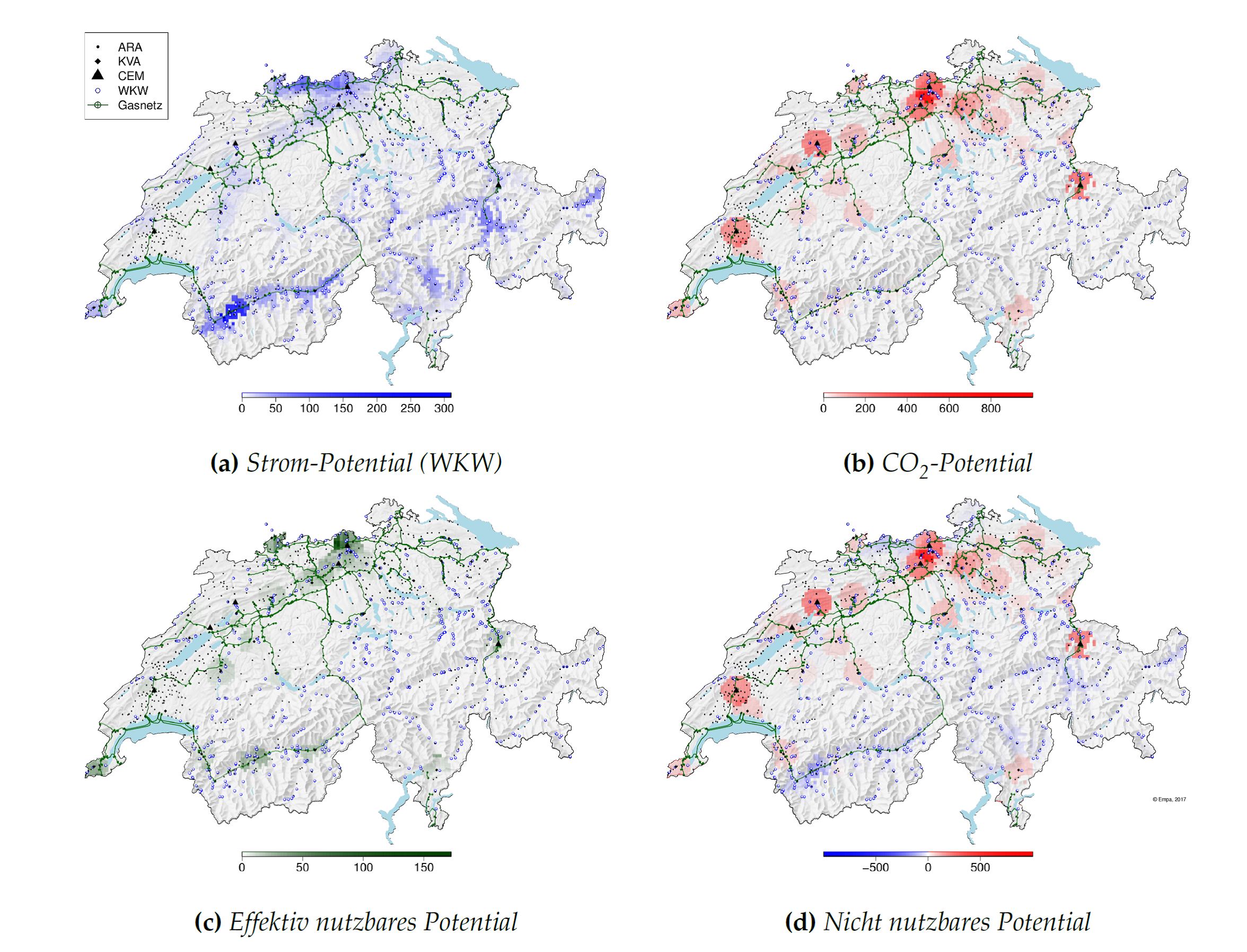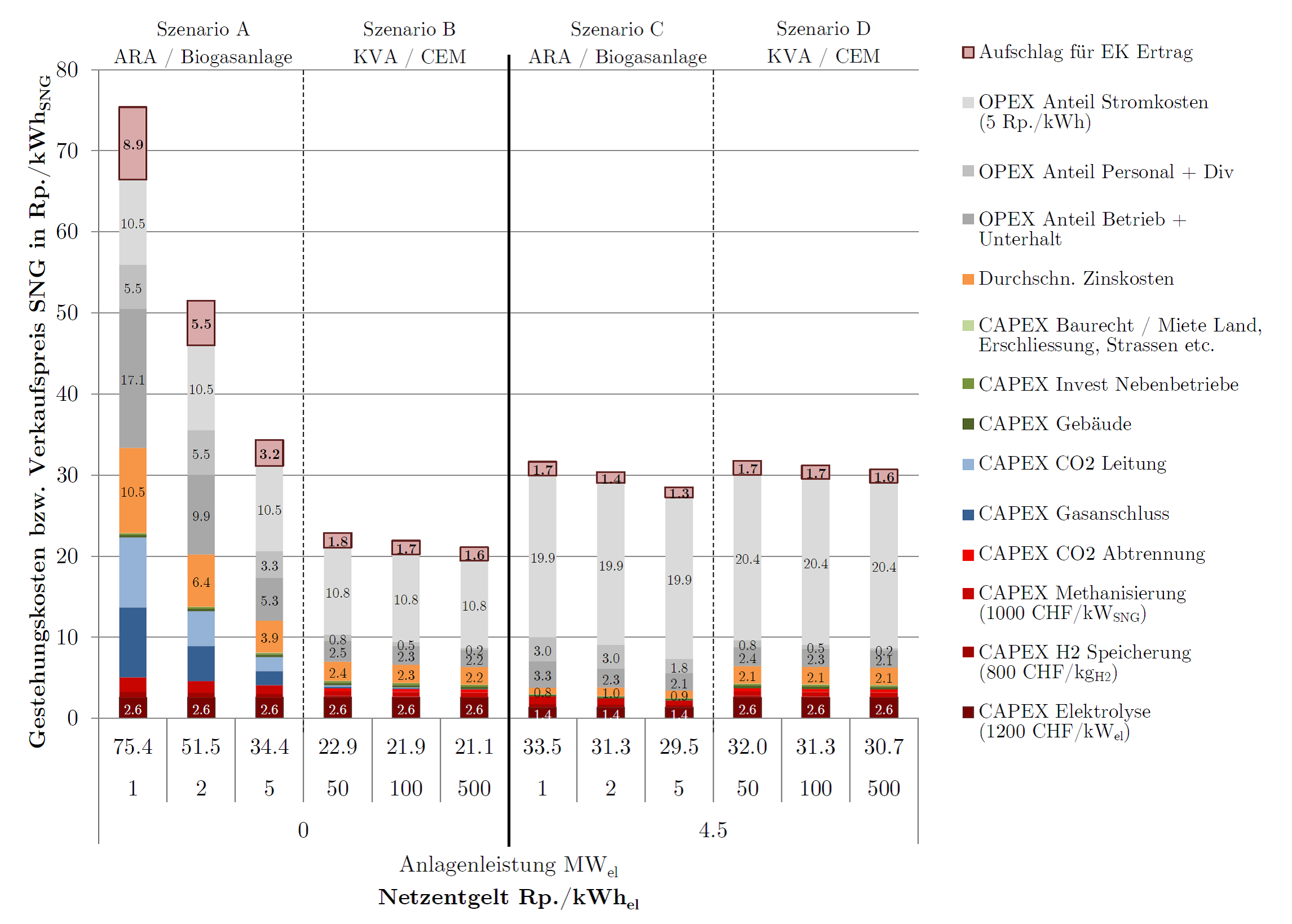Potentialanalyse Power-to-Gas in der Schweiz
Analysis of Potentials of Power-to-Gas in Switzerland - Focus on technologies, CO2, locations, electricity, economics and deployment in mobility
Power-to-Gas (PtG) is a process for the conversion of renewable surplus electricity (e.g., from wind and solar PV) into storable chemical energy carriers such as hydrogen, synthetic natural gas (SNG) and liquid hydrocarbon (e.g. methanol). In this study commissioned by the Federal Office for the Environment (FOEN), the technical, geographical and economic potentials of PtG in Switzerland are assessed.
Using high resolution temporal and spatial data, it is analyzed how PtG can contribute to the reduction of fossil CO2 emissions in the mobility sector and how PtG can be integrated into the energy system. Predictions on the available surplus electricity in the current and future Swiss electricity system with a phase-out of nuclear power and a substantial expansion of solar PV are made. As a result, large amounts of surplus electricity are generated from PV in summer, while in winter there is a shortage of (domestic) electricity production and CO2 intensive imports are needed. The high flexibility and seasonal storability of PtG products make them a promising option to still promote the planned expansion of PV, while reducing CO2 emissions in other sectors (such as mobility). As a prerequisite various boundary conditions and dependencies have to be met. A geographical boundary condition is for example the spatial and temporal availability of CO2 sources (cement plants, KVA, ARA), hydropower plants, and natural gas grid feed-in points. These geographical dependencies are evaluated and quantified by means of a GIS analysis (see Fig. 3). Moreover, a business case model is used to show how the competitiveness of PtG products, in particular, depends on low electricity prices and grid fees (see Fig. 4).


"Potentialanalyse Power-to-Gas in der Schweiz"
Report DOI: https://doi.org/10.5281/zenodo.2649816
-
Share
